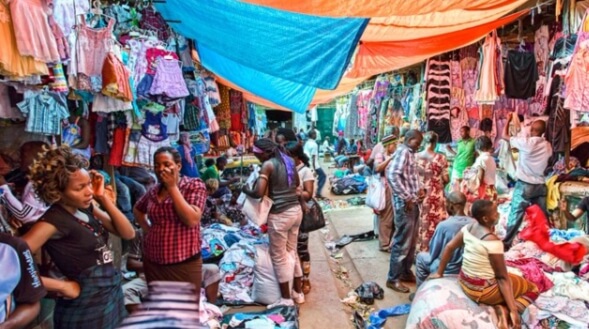How to Efficiently Source Uganda Used Clothes for Your Business Successfully sourcing Uganda used clothes requires a strategic approach to ensure quality, compliance, and profitability. Uganda’s used clothing market is diverse, offering everything from casual wear to specialized garments. In this guide, we’ll highlight key strategies to streamline your sourcing efforts, providing valuable insights into the Ugandan market and practical tips for importers looking to grow their secondhand clothing business.

1. Introduction to Sourcing Uganda Used Clothes
Uganda used clothes have become a vital part of the global secondhand clothing trade, offering a cost-effective solution for businesses looking to import affordable yet fashionable garments. As the demand for sustainable fashion grows, importers are increasingly turning to Uganda’s well-established secondhand market. This guide provides a comprehensive overview of how to efficiently source Uganda used clothes, ensuring that importers can navigate the market with confidence.
Overview of Uganda’s Secondhand Clothing Market
The Uganda used clothes market has evolved into a robust and thriving sector. Importers benefit from a reliable supply of secondhand garments that cater to diverse consumer preferences, making Uganda an attractive destination for sourcing high-quality, pre-loved fashion at competitive prices.
Why Uganda is an Ideal Sourcing Destination
Uganda’s strategic position in the secondhand clothing trade, coupled with its growing consumer demand, makes it an ideal sourcing destination. Importers sourcing Uganda used clothes gain access to an abundant supply of garments, driven by a strong local market and favorable trade conditions.
2. Understanding Uganda’s Used Clothes Market
To successfully import Uganda used clothes, it’s essential to understand the local market dynamics. Uganda’s secondhand clothing market is diverse, offering everything from basic casual wear to high-demand fashion pieces. By gaining insights into the market trends and garment categories, importers can make informed decisions to maximize profitability.
Market Trends and Demand in Uganda
Uganda used clothes are increasingly popular due to their affordability and variety. The demand for secondhand clothing in Uganda is steadily rising, driven by a growing middle class and the global push for sustainable fashion. Importers can capitalize on this trend by focusing on high-demand categories that appeal to both local consumers and export markets.
Key Garment Categories in Uganda’s Secondhand Market
The Uganda used clothes market includes a wide range of garment categories, such as casual wear, formal attire, and children’s clothing. Importers should focus on sourcing items that are in high demand, such as T-shirts, jeans, and shoes, which are popular across various consumer groups in Uganda.
3. Key Strategies for Efficient Sourcing
Efficiently sourcing Uganda used clothes requires a strategic approach, from identifying reliable suppliers to ensuring product quality. Importers must build strong relationships with trusted suppliers while implementing quality control measures to ensure they receive the best products at competitive prices.
Building Relationships with Reliable Suppliers
A key factor in successfully sourcing Uganda used clothes is building strong relationships with reputable suppliers. Reliable suppliers ensure that importers receive consistent, high-quality clothing, reducing the risks of delays or defective products. Establishing long-term partnerships helps streamline the sourcing process and maintain a steady flow of goods.
Ensuring Quality Control in the Sourcing Process
Quality control is essential when sourcing Uganda used clothes to ensure customer satisfaction and reduce returns. Importers should implement rigorous inspection processes, verifying that garments meet quality standards and are free from defects, stains, or damage. This not only improves product reliability but also enhances the reputation of the importer’s business.

Navigating Local Regulations and Import Requirements
Importing Uganda used clothes requires navigating various local regulations and import requirements. Importers must stay informed about tariffs, taxes, and compliance rules to avoid legal issues and ensure smooth operations. Understanding these regulations will help importers avoid delays and additional costs during the import process.
4. Logistics and Supply Chain Management
Effective logistics and supply chain management are critical to the success of any Uganda used clothes import operation. By optimizing shipping, customs clearance, and distribution, importers can reduce costs and improve delivery times, ensuring that their secondhand clothing arrives on time and in excellent condition.
Managing Shipping and Customs in Uganda
Shipping Uganda used clothes involves coordinating with freight forwarders and navigating customs regulations. Importers should work with experienced logistics providers to ensure that shipments clear customs smoothly and are delivered on time. Proper documentation and knowledge of local customs laws are key to avoiding delays.
Cost-Effective Transport and Distribution Solutions
To maximize profitability when importing Uganda used clothes, it’s important to implement cost-effective transport and distribution strategies. This includes selecting the most efficient shipping routes and methods to reduce costs, as well as partnering with reliable distributors to ensure timely delivery to buyers.
5. Best Practices for Importing Uganda Used Clothes
Importers of Uganda used clothes can enhance their operations by following best practices that include leveraging technology, ensuring ethical sourcing, and adopting sustainable practices. These strategies not only improve sourcing efficiency but also help align with global trends in ethical and eco-friendly fashion.
Leveraging Technology for Sourcing Efficiency
Technology plays a crucial role in improving the sourcing process for Uganda used clothes. Importers can use online platforms to connect with suppliers, streamline inventory management, and track shipments in real-time. This enhances efficiency and helps importers stay competitive in the fast-paced secondhand clothing market.
Ethical and Sustainable Considerations for Importers
As sustainability becomes a key focus in the fashion industry, importers of Uganda used clothes should prioritize ethical sourcing practices. This includes ensuring that their suppliers adhere to fair labor standards and promoting the environmental benefits of secondhand clothing, helping to reduce fashion waste and support circular fashion.

6. Conclusion: Maximizing Your Import Success
Sourcing Uganda used clothes offers importers significant opportunities for growth, especially as demand for sustainable fashion continues to rise. By understanding the market, implementing efficient sourcing strategies, and leveraging logistics solutions, importers can thrive in this dynamic sector. By following the insights provided in this guide, businesses can maximize their success and build long-term relationships in Uganda’s secondhand clothing market.

